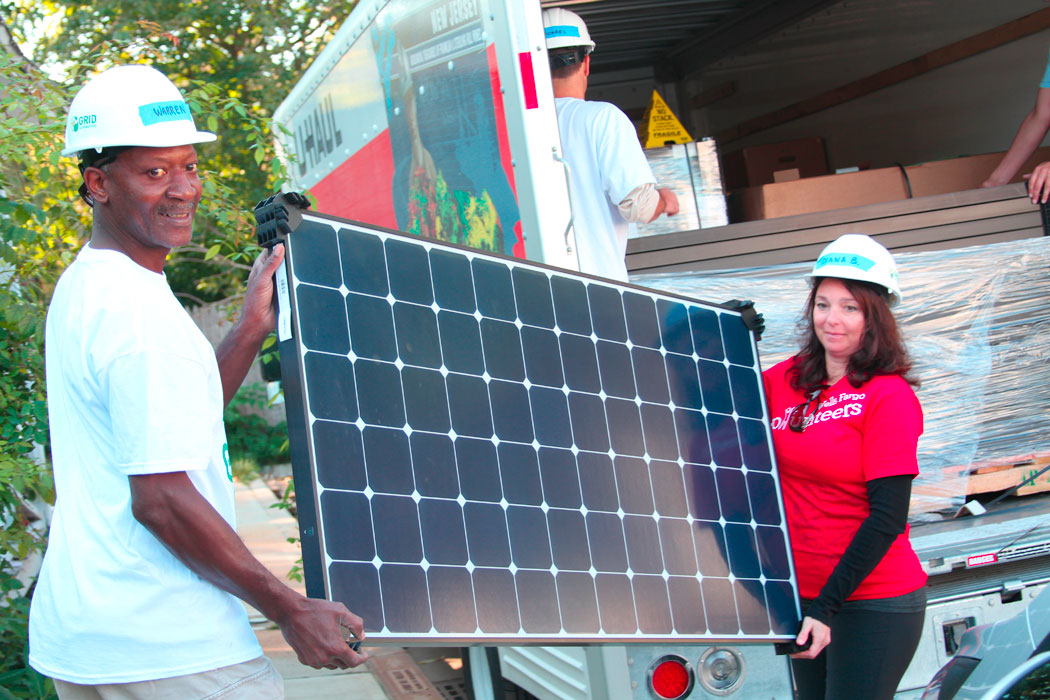The solar industry is on an upward tick with about 36,000 new jobs expected next year—21,000 of which will be in installation. That means a cleaner environment and well-paid employment. GRID Alternatives, a California-based solar non-profit, is making sure low-income neighborhoods have access to both solar energy and the jobs they create.
Their efforts alone have prevented “the release of 340,000 tons of greenhouse gasses over the systems’ lifetimes and provid[ed] more than $110 million in energy cost savings.”
Through their Workforce Development programs, GRID Alternatives makes sure their solar installation is done by folks who may otherwise not have the opportunity for such well-paying jobs—solar installers earn between $20-$24 per hour starting wage. With these training programs, many of their participants go on to get full-time work in the solar sector.
A few of their programs include one specifically for women and another for veterans wanting to start a new career in clean energy. Overseas, their international program is currently working to bring solar energy to the communities in Nepal that were impacted by the devastating earthquake.
A post shared by GRID Alternatives (@gridalternatives) on
“I grew up in a neighborhood that was violent, and there were always shootings around,” Denny Sysaknoi—a former intern—says in a testimonial on their site. “I was getting in trouble in school. My father told me I was not ever going to be anybody.” After spending a week in jail, Sysaknoi started volunteering at GRID Alternatives which quickly turned into a six-month internship. Now, he’s a crew leader at a local solar company.
The efforts of GRID Alternatives are well-loved across the nation, with branches in California, Washington D.C., Colorado, Connecticut, New York and New Jersey. Recently, Wells Fargo gave GRID Alternatives a $2 million grant, and Enphase Energy Inc., Sun Edison LLC and SunPower Corp. offered equipment donations.
Feature photo: GRID Alternatives Flickr



